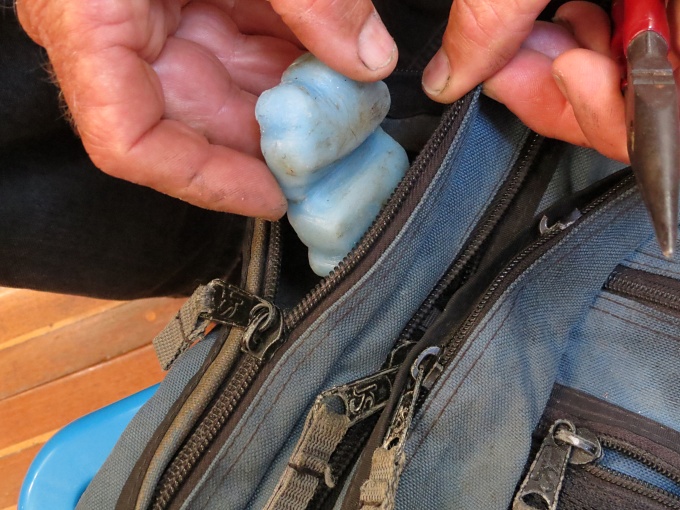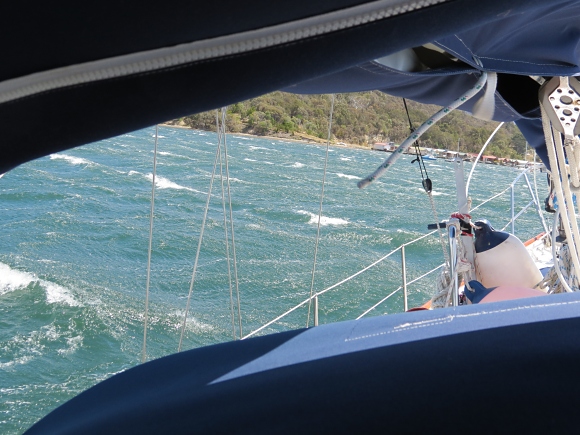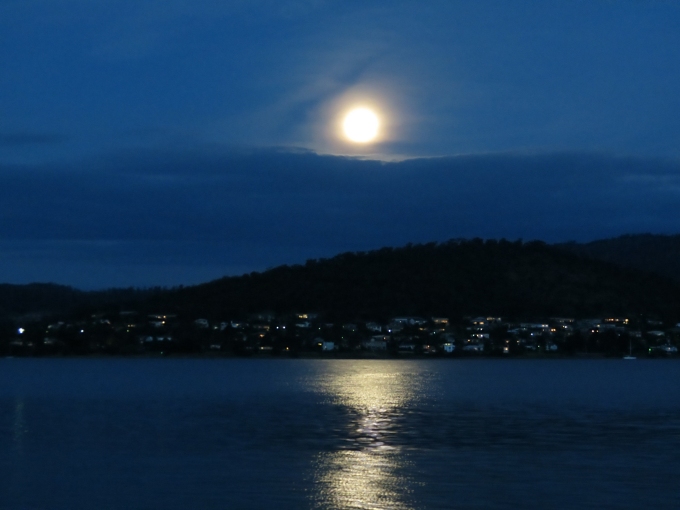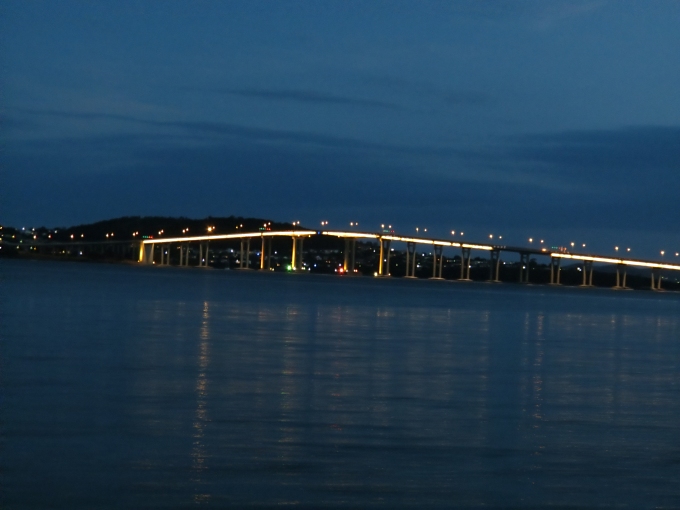How to unstick a stuck zipper
/ I know, zippers are not a usual topic for a live-aboard, sailing adventure blog site. It's just that they're driving me crazy right now and I thought you should know about it. If you've got any notion at all to live aboard a boat, zippers will become an issue for you.
Like everything else metal on a boat, zippers, like the kind on your backpacks, jeans and zip-up fleeces, tend to corrode. It's not the zipper teeth themselves, but rather the metal slider and pull tab. They corrode in place on the nylon or metal zipper teeth. We left one backpack aboard when we headed to the States this past summer. I went to use it the other day to go walking. Not one of the five zippers on that backpack worked. All were frozen shut.
I know, zippers are not a usual topic for a live-aboard, sailing adventure blog site. It's just that they're driving me crazy right now and I thought you should know about it. If you've got any notion at all to live aboard a boat, zippers will become an issue for you.
Like everything else metal on a boat, zippers, like the kind on your backpacks, jeans and zip-up fleeces, tend to corrode. It's not the zipper teeth themselves, but rather the metal slider and pull tab. They corrode in place on the nylon or metal zipper teeth. We left one backpack aboard when we headed to the States this past summer. I went to use it the other day to go walking. Not one of the five zippers on that backpack worked. All were frozen shut.
Here's a line from Wikipedia on the subject:
“A zipper costs relatively little, but if it fails, the garment [or backpack] may be unusable until the zipper is repaired or replaced—which can be quite difficult and expensive.” What a revelation! Not only is it unusable, but you can't retrieve anything that's been left in it!
 Granted, the backpack is beat up. I've been using it for years. However, since $75 backpacks don't grow on trees and we've run into this same situation a number of times, David has become pretty efficient at repairing/rejuvenating zippers with this particular problem. Here's the solution.
Granted, the backpack is beat up. I've been using it for years. However, since $75 backpacks don't grow on trees and we've run into this same situation a number of times, David has become pretty efficient at repairing/rejuvenating zippers with this particular problem. Here's the solution.
 1. Free the zipper slider. Repeatedly spray with WD40 and work the slider with needle nose pliers until the slider can be moved on the zipper teeth. You can't be too aggressive in your efforts or you'll break the slider and/or the tab pull. An even pressure, more WD40 and patience will eventually free the slider. (The patience part can be an issue … but that's just me.)
1. Free the zipper slider. Repeatedly spray with WD40 and work the slider with needle nose pliers until the slider can be moved on the zipper teeth. You can't be too aggressive in your efforts or you'll break the slider and/or the tab pull. An even pressure, more WD40 and patience will eventually free the slider. (The patience part can be an issue … but that's just me.)
 Open the zipper and lubricate. Once the slider can be moved, open the zipper all the way and apply a zipper lubricant/preservative along both sides of the teeth. Our well-worn teflon lubricant is in a solid bar form and made by Pelican Canvas Products in San Pedro, CA. We've had it since we moved aboard the boat. I couldn't find a website for Pelican, but we have used MaxWax as well. The same product can also be used for wetsuits, luggage, etc. We're sure other brands will work just fine. In a pinch, we've even used an unscented, white candle.
Open the zipper and lubricate. Once the slider can be moved, open the zipper all the way and apply a zipper lubricant/preservative along both sides of the teeth. Our well-worn teflon lubricant is in a solid bar form and made by Pelican Canvas Products in San Pedro, CA. We've had it since we moved aboard the boat. I couldn't find a website for Pelican, but we have used MaxWax as well. The same product can also be used for wetsuits, luggage, etc. We're sure other brands will work just fine. In a pinch, we've even used an unscented, white candle.
 3. Work the zipper all the way up and down a few times to make sure it zips smoothly. In a perfect world, with a perfect crew, we'd lubricate all of our zippers on a regular basis (as if!), but since we don't, these extreme measures do the trick.
3. Work the zipper all the way up and down a few times to make sure it zips smoothly. In a perfect world, with a perfect crew, we'd lubricate all of our zippers on a regular basis (as if!), but since we don't, these extreme measures do the trick.
So, while David was unfreezing zippers, I happened to have internet access and got these key facts about zippers from Wikipedia for your personal pleasure while you're waiting for the WD40 to work:
Elias Howe, who invented the sewing machine (in Spencer, MA right next to my hometown of Leicester) received a patent in 1851 for an "Automatic, Continuous Clothing Closure". His sewing machine was evidently doing so well, he didn't market it and lost his window of opportunity.
A Swedish-American electrical engineer, Gideon Sunbäck, is actually credited for this invention c.1917. B F Goodrich used it for its rubber boots and coined the word “zipper”because that's the sound the slider makes when it's doing its thing.
Zippers were first used for boots and tobacco pouches and didn't really “take off” till the 1930's when zippers were used on kids clothes and marketed as an easier way for kids to dress themselves.
French fashion designers declared the zipper the ultimate in fashion for men in 1937 when it won the “Battle of the Fly” over traditional button-flies Here's my favorite line: “Esquire declared the zipper the "Newest Tailoring Idea for Men" and among the zippered fly's many virtues was that it would exclude "The Possibility of Unintentional and Embarrassing Disarray."
Ah, the virtues of zippers, but there's something to be said about a man in tight Levi 501s.
Do you use Wikipedia? I do... a lot. It's free to use, but you might want to consider contributing a little into the till. They're asking for the price of a cup of coffee (Starbucks not a senior McDonald's). Help them out. We did.









